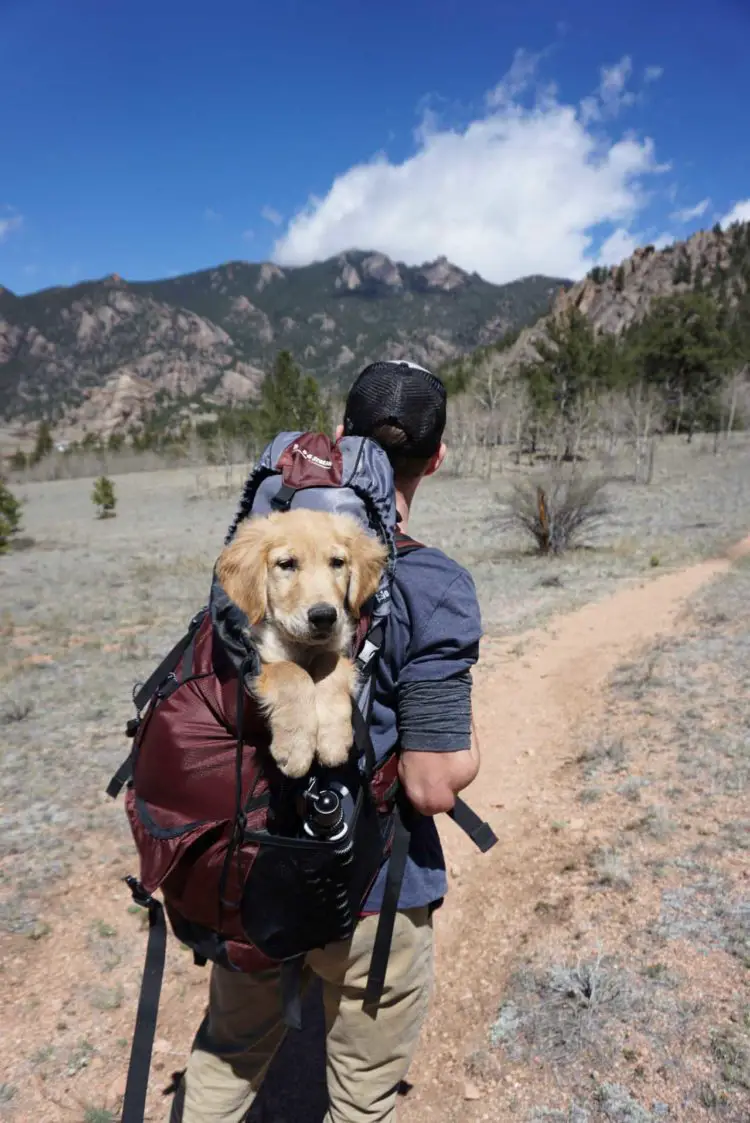While climbing was something I fell in love with some years ago, all my life, there’s something I’ve always loved… dogs. Growing up, we always had a dog. Our first dog, Peanuts, was my parents’ pet before I was even born. Later, we got another dog, a beautiful golden retriever, which I got to name Dogma, not realizing what the word actually meant. I was just little and thought I was inventing my own name.
Years later, I would come to find out why my parents had laughed so hard, but that’s neither here nor there. I love dogs, and I’m the proud owner of a border collie mix that I adopted from the pound about 2 years ago. His name is Beta (haha!) and he’s a fun one to take along to the crag. My parents current dog, Pom-Pom, is a Samoyed who is truly gorgeous, but a little too fluffy and fussy to take along. Besides, the amount of fur on her means an automatic trip to the groomer’s.
Do you have a dog too? If you do, you might be wondering, “Can I bring my dog rock climbing?” Yes, but it depends on the dog. Keep reading to find out more!
Best Dogs for Rock Climbing
According to dog experts, there’s really not one breed that’s better than another for rock climbing. They should have certain characteristics though that will make them a good climbing companion. Beta has these traits but Pom-Pom doesn’t. You might love your dog and love climbing, but your dog might not be into it and that’s ok. Read on to find out what kind of dog personalities are best for taking to the mountains.
– Relaxed attitude
Ideally, your dog has a mega-chill vibe just as you do. He stays out of the way and just relaxes, enjoying the outdoors. He’s also not a big barker. Other climbers will complain about a loud, barking dog. If something’s up like a bear is coming on through, then that’s understandable, but a dog that barks every time the wind rustles through the leaves of the trees is a pain, especially if you’re not there to calm him down.
– Good behavior
Before taking your dog to the crag, you hopefully have spent time with him out in the wild, perhaps hiking. During these times, if he stays away from creatures like spiders and snakes, you can probably trust him to be a good climbing companion. Additionally, you should show him the ropes, literally. No one wants a dog that steps all over the ropes or snarfs down other climbers’ lunches when no one’s watching.
You probably really love your dog. I love mine too. If Beta weren’t well-behaved and relaxed, I wouldn’t bring him around to the crag with me. I’ve got him trained just right to stay out of the way and to only bark when there’s danger. He knows better than to beg others for food or snatch lunches from coolers.
Take a good, honest look at your dog’s temperament and behavior. A good test is to go hiking or take him to lots of picnics at the park to see how he behaves. Plus, you might want to think about how your dog acts around other dogs in case someone else brings their dog climbing too. Other climbers might love dogs, but they won’t love yours if it starts barking constantly from the moment you get up there until you come down.
Getting Your Dog Ready for the Climb
If you think your dog might be a good climbing companion, there are a few things to do before calling out, “Here, Boy!” and having him jump in the car with you. These tips will ensure his safety, as well as yours and that of other climbers.
– Get him a checkup
It’s always wise to make sure your pet is in tip-top shape, but before you begin taking him out to the crag on a regular basis, you should get your vet’s seal of approval. It’s helpful to get flea dips and take preventative measures for ticks. Your vet will also tell you if your dog’s bones are developed enough if your dog is just a pup. Your best bet is to wait until your dog is about a year old, give or take, to ensure he’s up to muster.
– Make sure all vaccinations are current
If his bones are good to go, make sure your dog has had all the vaccinations he needs to keep him safe. Living in the city, you have less concerns about him drinking from a contaminated lake. Your vet can provide preventative vaccines and treatments to keep your dog safe while out in the wild. Your vet will also tell you if your dog’s immune system is developed enough to be safe at the crag.
– Check the park regulations before bringing your dog with you
Many national parks in the US have stringent requirements about our canine friends. You should always look into what’s allowed. Some national parks don’t allow any dogs while others require your dog to be leashed at all times. Know before you go!
– Make sure your dog obeys
Keeping your dog leashed is just part of it. How does your dog react when other people come by? Or other dogs? Does he snarl and get mean or is he overly licky, jumping all over everyone? You want your dog to be in the middle, where the calm is.
– Bring what you need to clean up
Just as you should respect the environment when you’re climbing by picking up after yourself, you should be prepared to do it for your dog. Bring bags to clean up when he poops. A good idea is to carry a disposable bag that you can use to contain all the smaller poop bags so you can dispose of it all in one fell swoop without leaving any behind.
Staying overnight for a multi-pitch with your dog? Follow the same rules as camping. You’ll dump out your dog’s waste in a hole about 6 to 8 inches deep and bury it. That hole should be a minimum of 200 feet away from any water sources, camps, or trails. With peeing, you’ll have to be vigilant he doesn’t do it near or in any water sources.
– Try dry runs first
Once you get your dog ready and set for climbing, you should ease into it. I didn’t take Beta on an overnight multi-pitch until I was sure he could handle it. I made a short jaunt for bouldering. My best friend came along and we were really pleased with how well Beta behaved himself. I kept taking short and easy climbs with Beta around just to be sure he’d obey and stay out of the way. Once I knew I could trust him to be a good boy, I started taking longer climbs and eventually started camping out with him too. Now, there are very few instances where I won’t take him along.
– Take advantage of microchipping
Years ago, when I was a kid, our neighbor’s dog got out. My parents and I helped canvas the neighborhood looking for Flopsy, but she was nowhere to be found. Mrs. McDiller cried every day for her dog, and once she swore she saw her in a car leaving the supermarket, but she had no proof. When microchipping became available, my parents started having it done to all the dogs we ever owned. It’s painless and simple. Ask your vet! I had Beta microchipped long before I ever took him out to the crag. I highly recommend it.
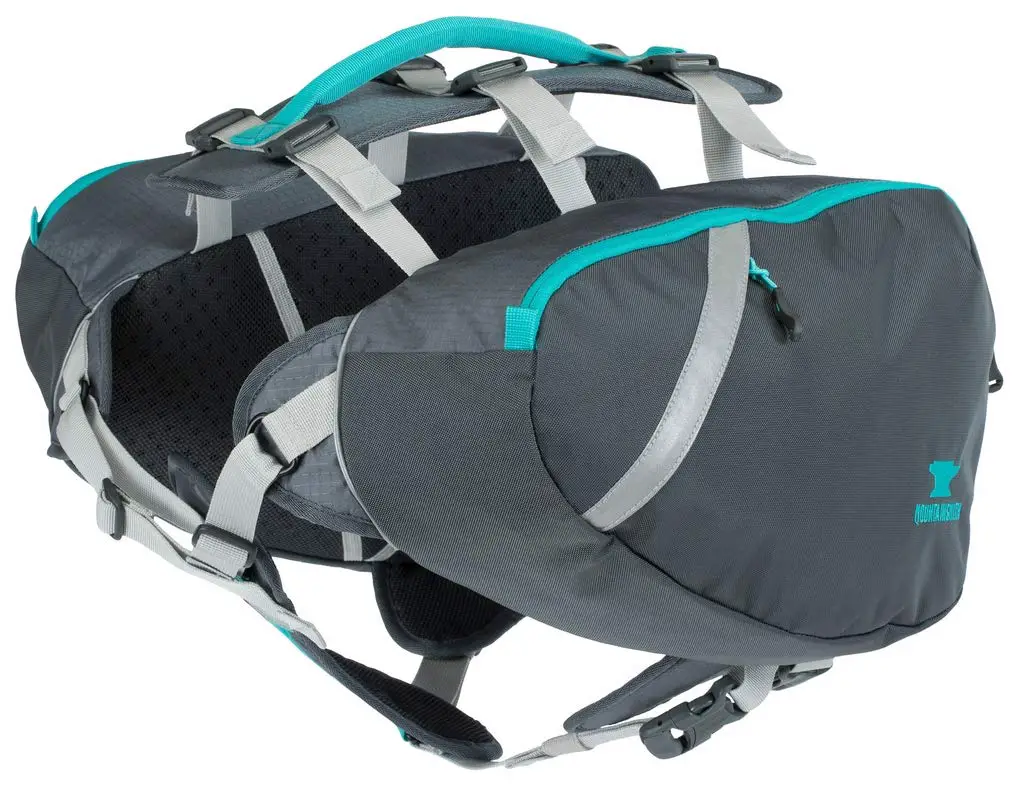
– Consider a dog pack
One thing I found really helpful once I knew Beta could be a good climbing companion was getting a dog pack. I really like the Mountainsmith K-9 Pack (which is also affordable at about 70$ on Amazon) because it’s got a nice handle at the top so if we have to cross water, I can grab hold of it and keep him safe. It’s also nice to have him carry his own load of gear. This is particularly useful for longer climbs and multi-pitch. You’ll want to bring a collapsible water bowl, extra water for him to drink, food, and a way to clean up his poop.
Make sure it’s not too tight though. You may want to try it on him around the house first to see how he likes it. On short climbs, you may just opt to carry everything yourself since you won’t be gone long, but when you’re going to make a full day of it or even go overnight (or multiple days) you really need to get a dog pack.
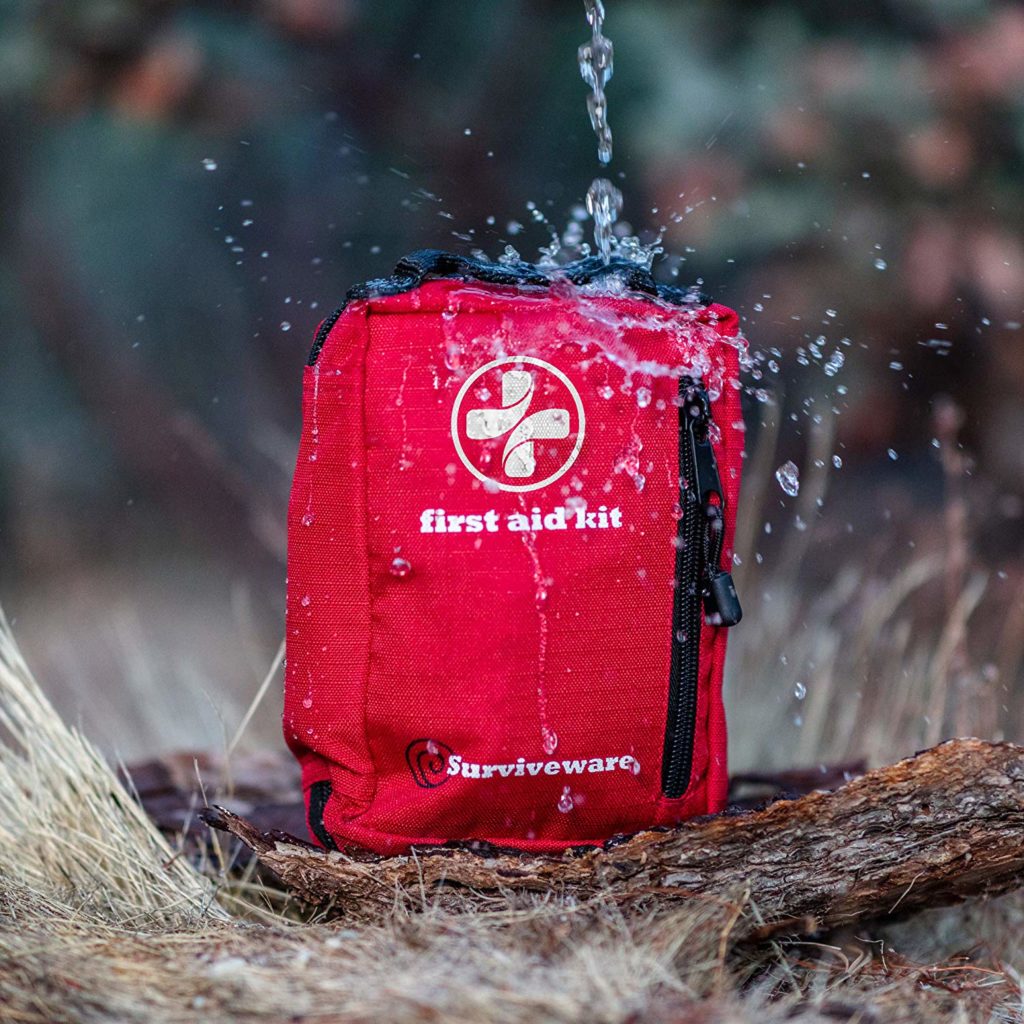
– Always bring a first aid kit when climbing
Even without your dog along for the climb, you really should always have a first aid kit with you. You should add essentials for your dog too. A good idea is to ask your vet for what should be included, aside from any medications your dog might be taking. I once saw another climber with a dog that brought along old, holey wool socks to use for bandages. Not a bad idea. Tweezers are great for removing burrs, splinters, and other painful items (also included in this kit I got from Amazon).
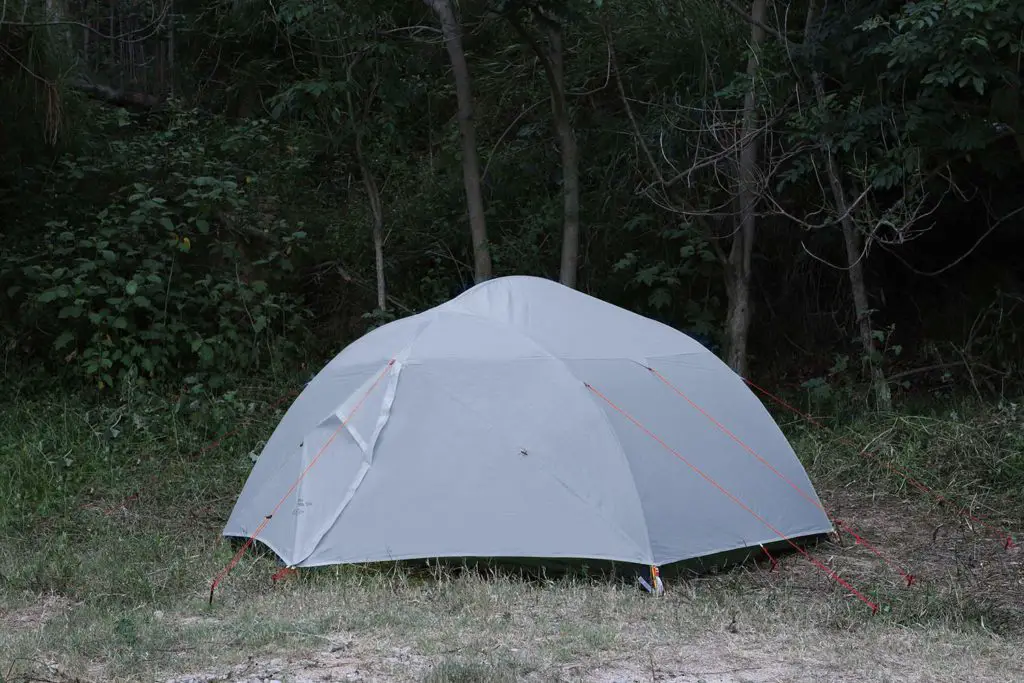
– Bring the comforts of home
If all shorter climbs have been a success with your dog, staying overnight is the next step. Now though, you’ll need a larger tent like this one from MIER for him to sleep in. But If you prefer to sleep directly under the stars, this awesome hammock with a mosquito net is a must at only $70, your dog will then be able to stay in a foldable doggie bed. I like this one by Pawer (Amazon link), or rather, Beta likes it. He even wants to sleep in it when we’re at home.
The Ultimate List of Essentials for Bringing Your Dog Climbing
I’ve touched on a few of the items you’ll need when you start taking your dog along for climbs, but here is my ultimate list of things you should bring with you.
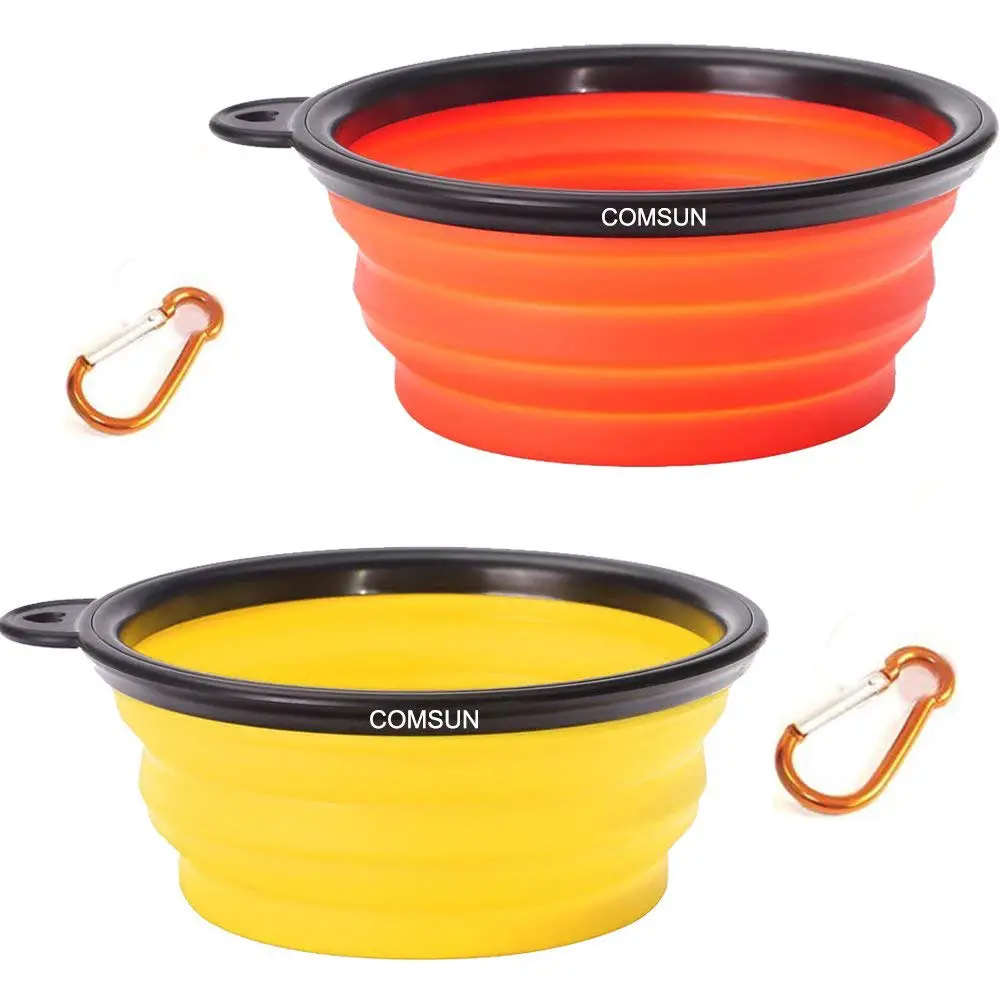
– Water and a container for water
I got Beta a collapsible water dish that we use for our climbs. I carry plenty of water and when he’s thirsty, I simply open up the foldable water dish and fill it up. It’s lightweight and takes up no space, this is a 2 pack, so you can use the other dish for dog food when climbing.
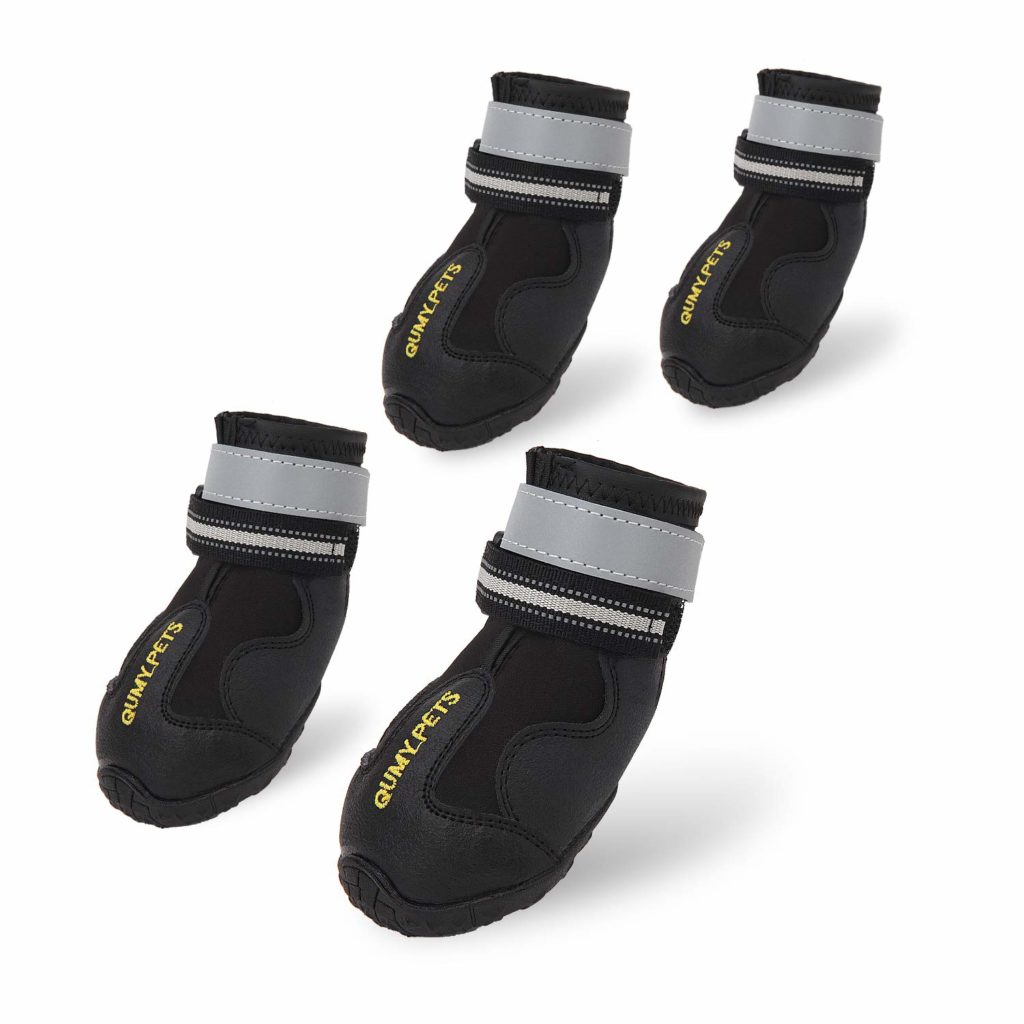
– Doggie shoes
This kind of depends where you’re climbing. If it’s cold and there’s ice and snow on the ground, don’t let your pup suffer. Get waterproof dog boots for him like these. The same goes for places with sharp rocks or thorny areas. If you would be uncomfortable walking barefoot on the terrain, then protect your dog’s paws.
– Towels
You don’t want to share your towel, do you? Use an old towel that you’ll designate for your dog to wipe off his paws when they get dirty before he hops into his doggie bed or gets into the tent with you. Use another one devoted to if he gets wet in pouring rain or decides to cannonball into the nearby lake.
– Nail care
You won’t need this for a half-day excursion or even a full-day if you’re coming home to your own bed. But in a tent, you’ll want to keep your dog’s nails filed (this one is by far my favorite) and clipped to prevent damaging the fabric. I learned this from a fellow climber I’d met when I was just starting to take Beta along with me. His dog’s nails had led to the fabric ripping on his semi-new tent.
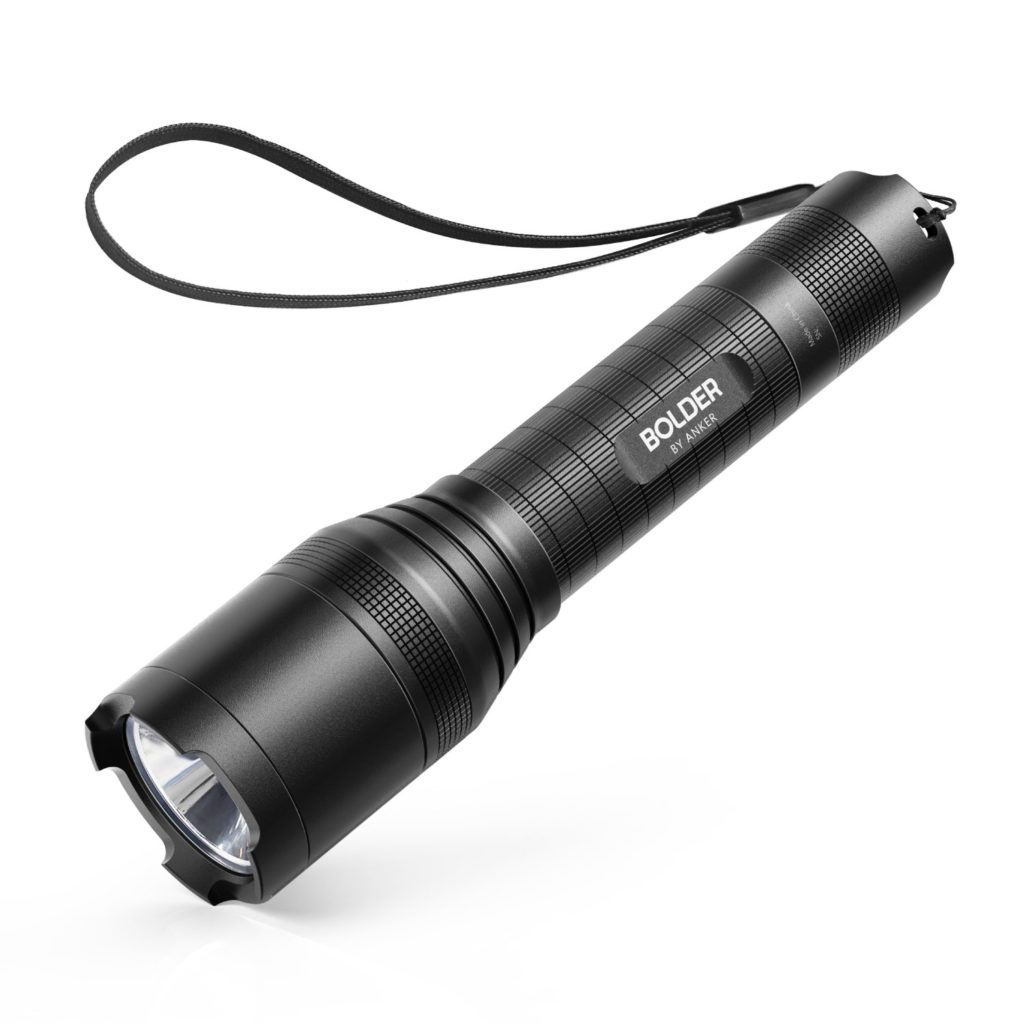
– Flashlight
Again, it’s a good one for overnight, but you won’t want to be left in the dark trying to keep tabs on your furry best friend when he has to go to the bathroom at night, I absolutely love Anker products and their bright tactical flashlight (Amazon link) is just amazing, I can also charge it with a micro USB cable, when the battery gets low, I simply use my 26800 mAh Power Bank.
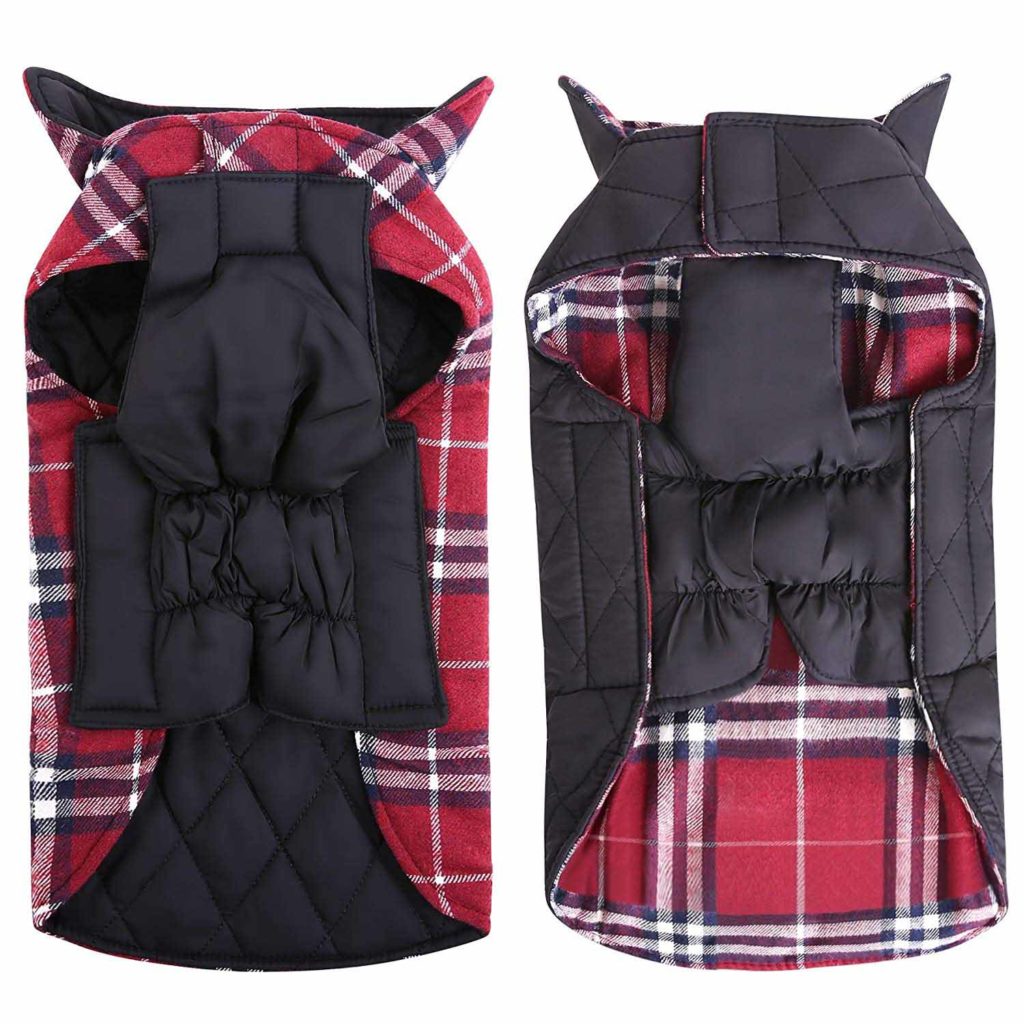
– Coat/clothing
If the temperatures are cold, it never hurts to take along a coat, sweater, or some other type of covering your dog can wear.
– Cooling collar
Since Beta and I live where it’s hot, I never take him outdoors without it. I love this cooling collar by The Dog’s Right, which makes it easy to keep Beta cool when the heat is intense.
– Outdoor toys
It’s not all about you and your climb. Bring dog toys that can handle a little dirt so he can fetch and have fun when you come back.
– Dog collar
You should never take your dog’s collar off when they’re outside of your home. Ever. Make sure all the information on that collar is up-to-date. I got this flea and tick collar for my dog Beta.
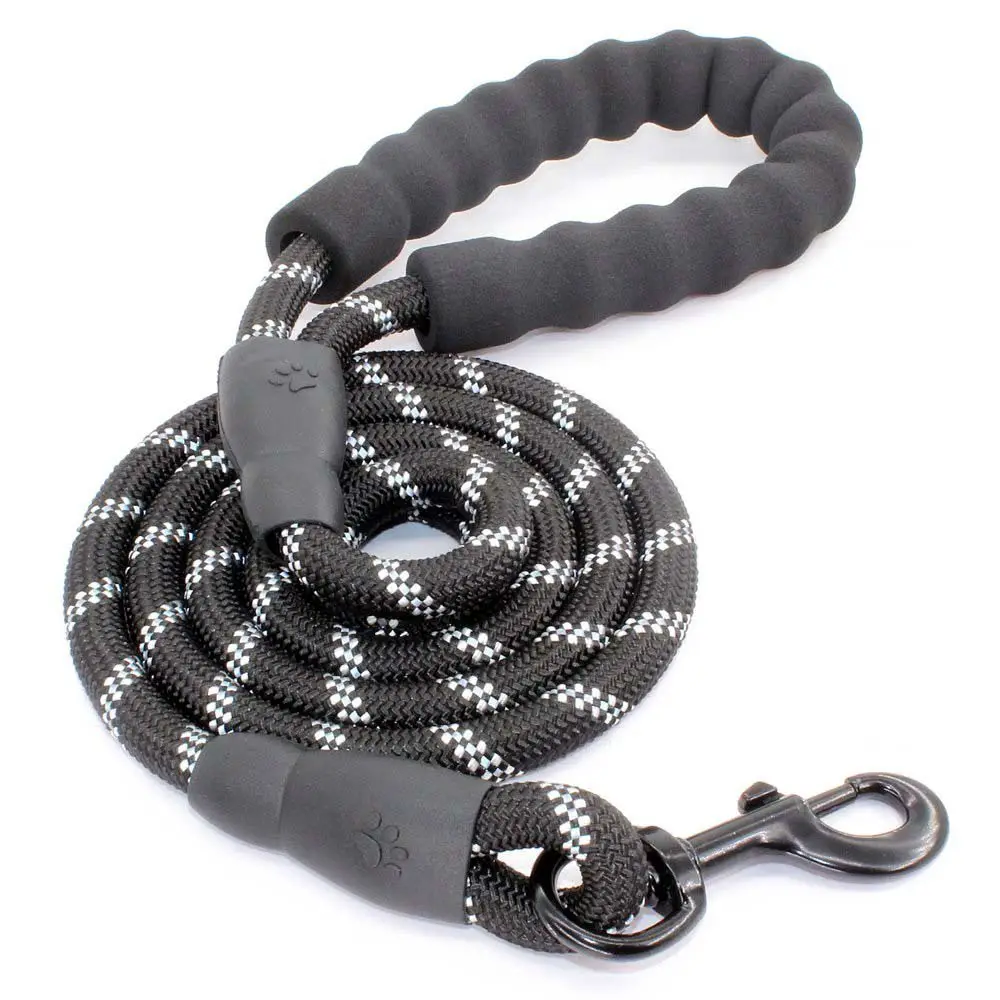
– Leash
As I mentioned before, most parks require your dog to be leashed. Even if you think your dog is well-behaved and can heel, you might be barking up the wrong tree if you take him off of the leash. It’s better to be safe than sorry. You don’t want him running amok, interfering with other climbers, or getting lost. While a microchip will help if he does get loose, you don’t want to make it easy for him to escape.
– Carry a photo
Even if you do keep your dog is on a leash, you should always have a photo in your phone and printed out in case you lose battery power (that’s where a Power Bank comes in handy). Sometimes dog gets loose and heaven forbid it happens, you’ll have something to show other climbers, nearby campers, or the rangers.
– Dog poop bags
As I said before, please clean up after your dog. That poop pollutes the ecosystem. Let’s be kind to nature a use dog poop bags!
– Snake repellent
Whether I’m with Beta or not, snakes are very common where I live. Cool creatures to admire from afar or in a tank of glass, but not cool when you’re hiking to the crag. This will keep you both safe, trust me. And this snake repellent is even eco-friendly and safe for your dog.
– Shade
On day trips when you’re not bringing a tent, consider bringing something that provides shade that you can easily set up. It will give your dog a cool place to sit and wait for you.
– Doggie bed
See above all the reasons why this is a stellar idea.
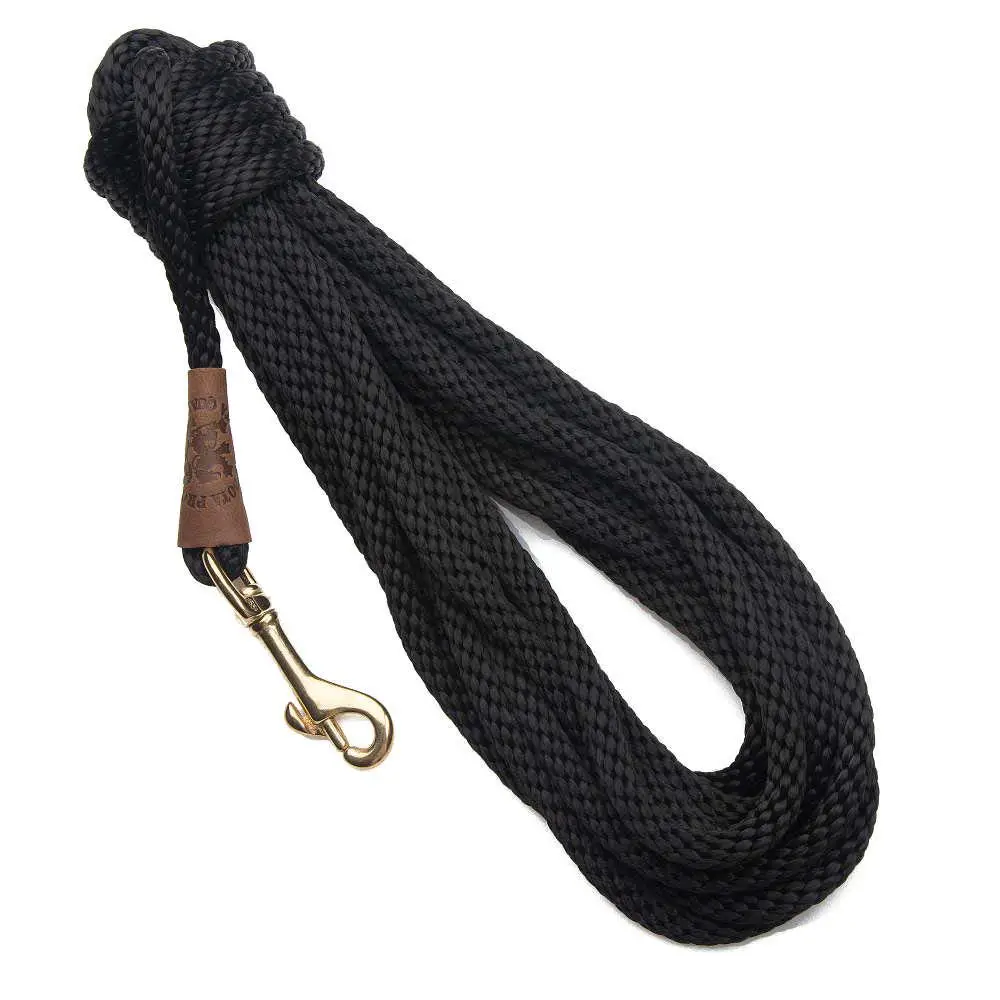
– Extra long rope
Take along an extra long rope (this one is 50 ft which makes it perfect) so you can tie your dog to a tree. The long rope gives him more length to roam and explore without running away.
– Bring extras
When you stay overnight, keep a set of extras along with you or out in your car. You’ll be glad you did in case you lose a collar, ID tag, toy, poop bag, or anything else.
Planning for Food and Water
Even if you plan on just a half-day, you should over-plan when it comes to food and water. You never know when something might come up and it is always better to have extra than to run out. If your dog is larger, you’ll want to bring along at least 1 ounce of water per pound your dog weighs per day. Dogs less than 20 pounds will need 1.5 ounces per pound of weight per day, generally speaking.
Always go by the nose. If it feels dry, your dog needs hydration. Still not sure how to assess it? Ask your vet!
For food, you should bring the usual amount of food you’d give your dog plus one cup for every 20 pounds of your dog’s weight when you take him with you on a climbing trip. Again, the vet can help you determine what the bare minimum should be. You should always bring more than that.
If you feel hungry, thirsty, or you’re dog-tired, pardon the pun, your dog likely is too. Keep watch on how he’s acting and take breaks accordingly.
Other Things to Watch Out For
In addition to having all the supplies necessary for your dog and your climb, it’s a good idea to watch how your dog seems to feel. Is he breathing quickly and not calming down? Let him rest and always be ready to roll if he seems like the heat is getting to him despite your best efforts. It’s never wise to push it.
Additionally, beware of:
– Wild animals
That leash will help keep your dog from rushing at bears or annoying peaceful deer. Always be alert outdoors and respect the animals that call it home.
– Ticks
Before heading home, check your dog for ticks. You don’t want to bring those home. They could bite you and give you Lyme disease.
– Poisonous foliage
Don’t set up camp near any poisonous plants. Be vigilant when hiking to the crag to ensure your dog isn’t munching on anything that could give him tummy trouble.
– Thorns and burrs
These can irritate your dog. Foxtails are even worse though because they’re barbed and can really snag at sensitive areas. Ideally, before taking your dog along for a big adventure, make sure you know the lay of the land. In case you stumble into something, the tweezers in your first aid kit should be helpful. Should your dog start sneezing heavily, have eye discharge, or head shaking, cut your trip short and get to your vet fast.
– Heat stroke
Heat stroke is a danger for dogs as much as it is for you. Make sure you’re letting him rest enough in the shade and put out plenty of water.
– Pathogens in the water
Just as you are, dogs are susceptible to waterborne pathogens. You should know what you’re getting into before venturing to your climbing destination and treat water accordingly for both of you.
– Swimming
Your dog should know how to swim before you take him on any adventure near water. If he doesn’t though, make sure you have a dog-friendly Personal Flotation Device or PFD. Even dogs that are stellar swimmers should never try to cross whitewater. Use the dog pack to carry him through it. Water temperature is also a concern depending on the climate and time of year. A cold lake can make your dog’s temperature drop to dangerous levels.
Bottom Line
If you want to take your dog along for the climb, make sure he’s able to comply behaviorally first. You don’t want him annoying other climbers, chomping on gear, or being a pain in the butt. You want him to be a cool companion that will hang with you at the crag.
As cool as your dog may be, some places either don’t allow dogs or it might not be a good fit to bring him along. Know before you go, visiting the destination yourself with just your human friends first to determine if it would be a good place for your dog too is a great idea.
And don’t forget the essentials! Start small by taking your dog on shorter climbs and then work your way up to overnight adventures. By taking it slow, you’ll be able to enjoy your favorite sport of climbing with your favorite dog!

